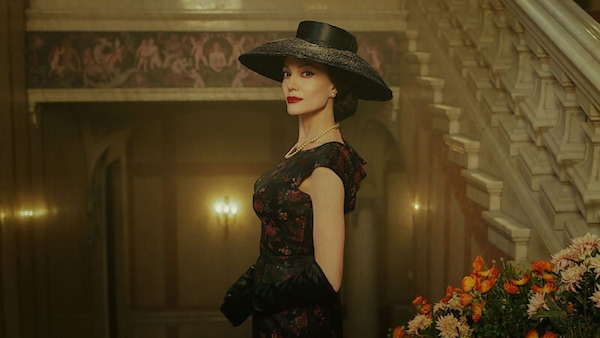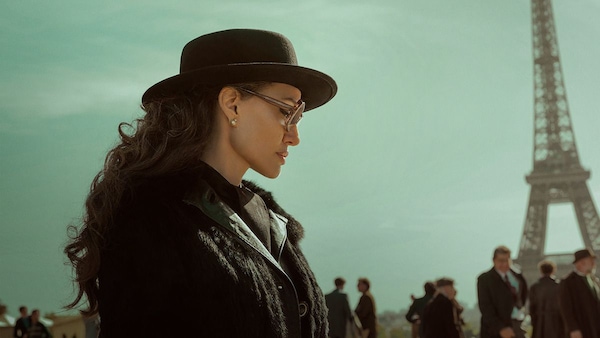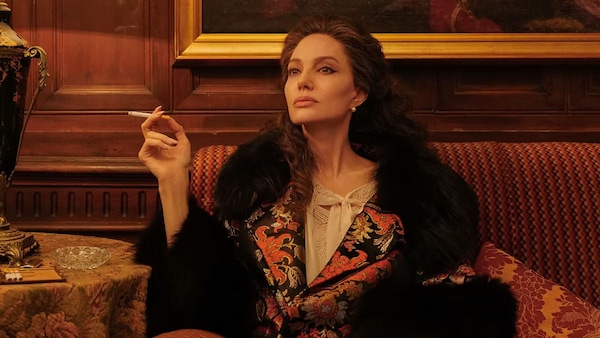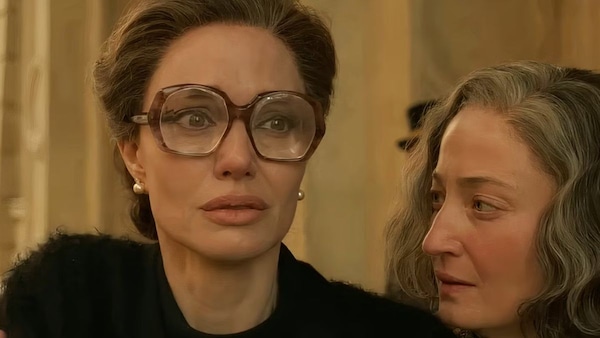Maria: Angelina Jolie Is Hypnotically Good In Pablo Larrain’s Biopic About A Star In Decline
Unlike Larrain’s other films about illustrious but broken women, Maria is possibly also his most restrained when it comes to latching onto the bait of an out-and-out tragedy.

Still from Maria.
Last Updated: 11.51 AM, May 10, 2025
“YOU HAVE NO IDEA OF THE PAIN, it takes to pull music out of your belly, out of your poor mouth,” Maria Callas, played by a distraught Angelina Jolie, bemoans in Pablo Larrain’s Maria. It’s a sequence that captures the dastardly beauty of a once-iconic starlet, struggling to come to terms with the decline of the prestige that accompanied her to the peak. Beneath this prestige, though, there has always been this layer of disgruntlement, the feeling that even at the heights of her powers, an artist is more object than subject. This latest addition to the Chilean’s considerable oeuvre of biopics featuring women at bay (Spencer, Jackie) is probably his most affecting, unglamorous sojourn yet. It’s a demanding watch, but for Jolie’s eerie performance, it’s well worth your time.

In Paris, in the 1970s, the world’s most famous opera singer, Maria Callas, is trying to engineer a last hurrah of sorts. She is ill, mentally crushed, visibly tortured, but still believes there is one last performance in her. It’s possibly the tragedy of being an artist, or of the fragile stature that comes with becoming an icon. The lights might dim in the theatre, but they never quite dim in your head. That hedonism is now duct tape for biopics about the unhinged decline of the once-legendary artists. The formula is the same. On some level, without ego there can be no brilliance. The formation of legend demands the suspension of self-doubt. Because unless you believe you are the greatest, maybe no one else will. From that familiar territory, though, Larrain and Jolie pull something irreverent and fresh.
Large parts of the Chilean director’s film are set in post-war Paris, bedecked with beautiful sights that contradict the hauntingly shallow countenance of Jolie walking its streets, as if to liven its venues. Or to reminisce about a past that, though a public spectacle, has also always been a personal ordeal. Women, or at least popular women, live between that frail front window of performance and the cracked, inner wall that accumulates grime, dust and wounds by the day. The film's pivot is a TV interview that Callas has granted, four years into retirement. It helps piece together her life from Nazi-occupied Greece, to becoming the plaything in a torrid love affair with Aristotle Onassis (Haluk Bilginer), to climbing the popularity charts in the US and Europe. Possibly the first artist to become a transcontinental voice in those days.

But part of Maria’s appeal isn’t the usual pageantry, the luxurious production that Larrain can pull off in his sleep, but the haunting quality of Jolie’s performance, its bizarre comic tone and the fact that it mirrors, to an extent, the audacity of her own comeback at the age of 49. Once Hollywood’s biggest female star, now a hollowed cavity of substance, this is Jolie’s film alone. “I took liberties with the world all my life. And the world took liberties with me”, she says, despondent, yet confidently, while arching over an old piano in a scene that quietly exposes the transactional nature of stardom. You’re out of reach but never quite in control. The people who make you are also the people who break you.

When so much of identity is externalised, or bartered in exchange for the means of survival and the methods of fame, it’s hard to tell where the you begins in ‘we’. Interestingly, Callas is as comic as she is tragic. Her condescension towards her staff, her hunger for visibility after retirement, her addiction to a mild sedative, and her confusion about what shape closure must take are all fascinating aspects of an artist unsure about how to deal with descents.
Unlike Larrain’s other films about illustrious but broken women, Maria is possibly also his most restrained when it comes to latching onto the bait of an out-and-out tragedy. There are bits of self-effacing humour, streaks of satire, and the near comical packaging of disillusionment. A sequence where she tries to sing to an empty theatre, as a trial, is deftly steered towards the dazzling exhibition of decomposition. It makes Maria simultaneously toxic and tragic. A tragedy, partly self-inflicted, partly imposed by the court of public opinion. Things that make Jolie the perfect embodiment of a has-been starlet chasing the shadows of the past in sunlit Paris.

The ambivalence of Maria, its suspect tone and intent, is what possibly rescues the film from the clutches of being the usual Larrain prestige product. In letting go, the director finds that the language of disaster elegantly turns into the language of decay. The only challenge here is to sit through the grimness of a tide, turning at the speed of fragmented thoughts. Fragments that are both precious, personal, yet oppressive. It’s a toxic relationship that can’t be sustained, but can only really be lived until your last breath. A bizarre marriage of fame and fortune, and the frictions that come with it. Every light that shines the brightest is, by design, condemned to endure the scandal of the dark. For once, a Larrain film thankfully doesn’t blind you while lighting it up.
